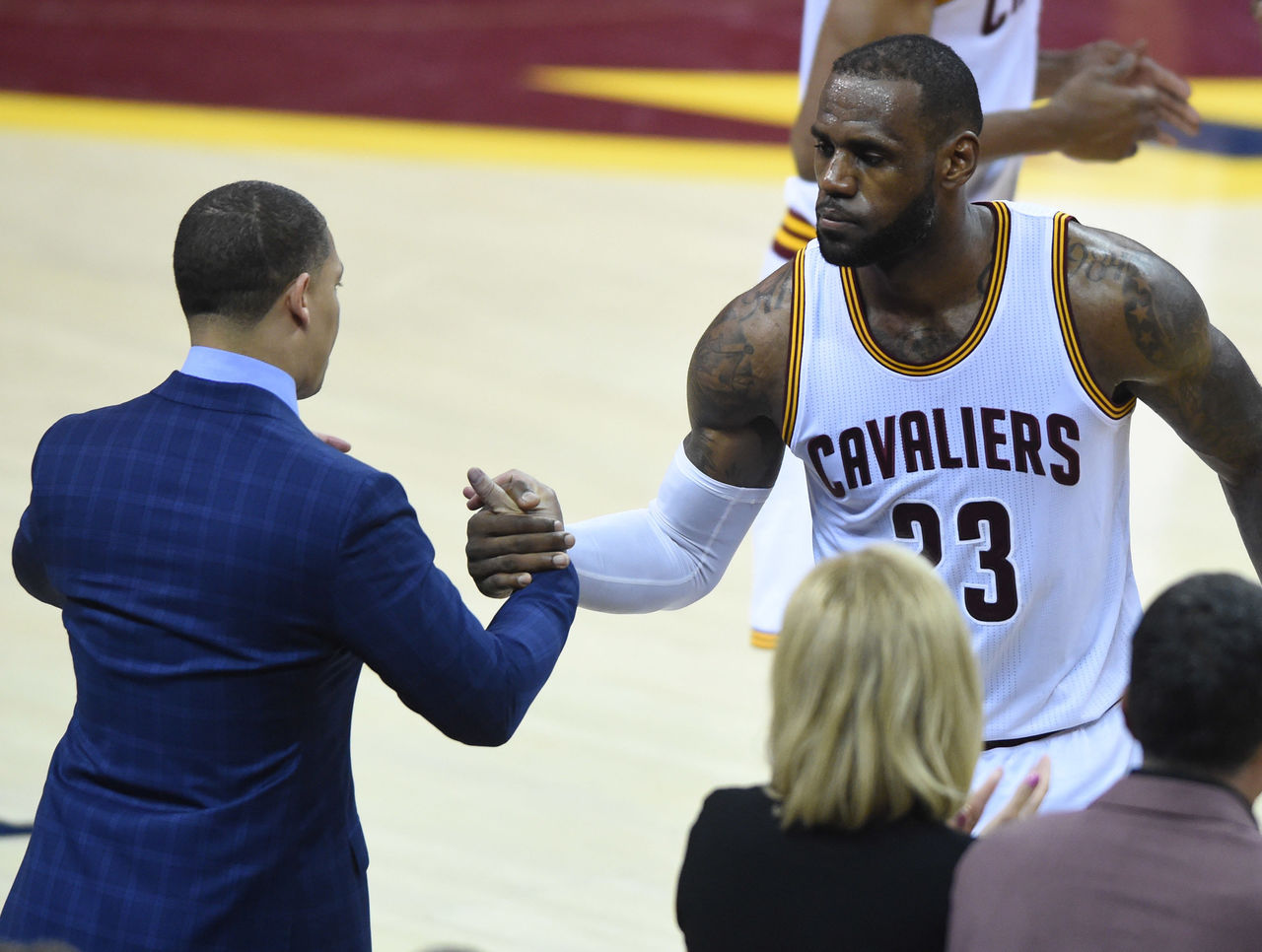Cavaliers should slow down, not try to run with the Warriors
The Cleveland Cavaliers tried to run with the Golden State Warriors once again in Game 2, and the result was the same: a blowout loss.
The reigning champions were defiant about not making too many adjustments after dropping the opening set, but it's clear Cleveland doesn't have the athletes, nor the shooters, to beat the Warriors at their own up-tempo style.
Cleveland's two fastest-paced games throughout the playoffs have come in the Finals as coach Tyronn Lue seems insistent on playing quickly to outscore the Warriors. But that strategy clearly isn't working as the Cavaliers have lost by 22 and 19 points, respectively.
| Event | Pace |
|---|---|
| Finals Game 1 | 102.52 |
| Finals Game 2 | 108.46 |
| Playoffs | 98.71 |
| Regular season | 98.38 |
| 2016 Finals | 95.38 |
| 2015 Finals | 94.78 |
Evidence suggests that the Cavaliers are simply running out of gas by halftime. They've been outscored by 11 in the first half compared to 30 in the second half over the first two games.
LeBron James opened Sunday's game with a determined effort as he slashed to the rim at will in the first half, repeatedly splitting open the Warriors' defenders for 12 paint attempts.
But all the bulldozing eventually came back to haunt James, as his tank was empty by halftime. He only tried two paint shots in the third and fourth quarters as he settled mostly for long jumpers and cross-court passes to little effect.
With James being unable to buoy the offense, Cleveland played right into the Warriors' hands. Long shots led to long rebounds, while rushed possessions produced turnovers. All that fed into the Warriors' unstoppable transition attack, and that's how a close contest became a blowout in the blink of an eye.

(Photo courtesy: Action Images)
The Warriors are obviously a different challenge this season with Kevin Durant in the picture, but Cleveland's best bet is to revisit what worked in its last two Finals showdowns.
A heavily shorthanded Cavaliers squad pushed the Warriors to six games in 2015, then launched the greatest comeback in Finals history the year after by dictating their own tempo. Being the older team, the Cavaliers wisely made the decision to play a half-court pace, and while it suppressed their scoring totals, it also worked to keep the Warriors in check.
The 2016 Finals featured roughly 95 possessions per 48 minutes, while 2015 was even slower. That's like something out of a 90s playoff series between the Knicks and Heat, which is the polar opposite of how the Warriors prefer to play.
Purposing James as a brutal post-up player was the key in Cleveland's strategy. The Cavaliers ran basic sets to have James switched onto a smaller player (usually it was Stephen Curry), then sent him into the post to either force a foul or draw help. Alternatively, they had Kyrie Irving isolate while everyone else focused on getting back in transition.
That strategy kept turnovers low, allowed everyone else to rest, and put the Warriors in foul trouble. It didn't make the best use of Cleveland's 3-point specialists, but fewer long shots also kept the Warriors from getting out in transition and asserting their advantage.
The Cavaliers have bizarrely decided to abandon this strategy. James has tried only one shot out of the post in two games, according to NBA analyst Nate Duncan.
James and Lue will be searching for answers after finding themselves in yet another 0-2 series deficit, but this is a problem they've already solved in the past. Stop trying to beat the Warriors at their own game, and focus instead on slowing things down.
That's their best shot of repeating as champions, as slim as those hopes may now be.
HEADLINES
- EuroBasket roundup: Finland stuns Jokic, Serbia to reach quarterfinals
- Clippers' Ballmer: I was 'conned' by company that paid Kawhi
- Clippers scandal underscores failure of the Leonard era
- Report: Spurs' Harper undergoes surgery to repair thumb ligament tear
- Thunder lose rookie big Sorber for season with torn ACL